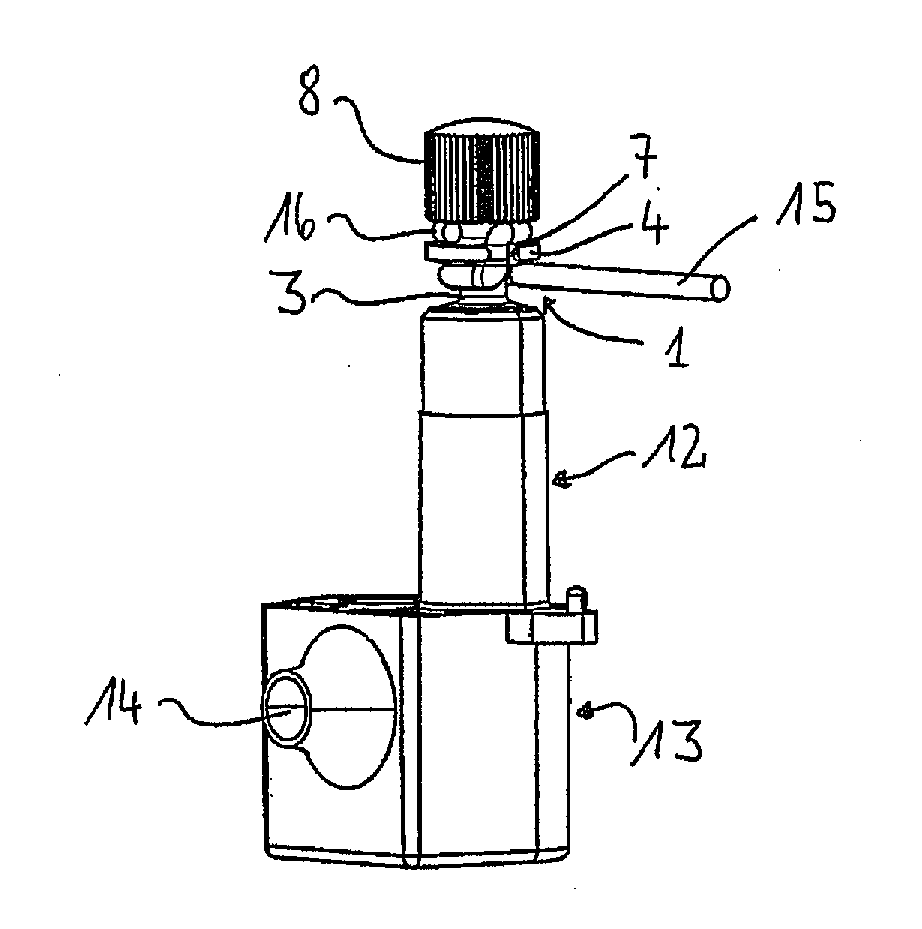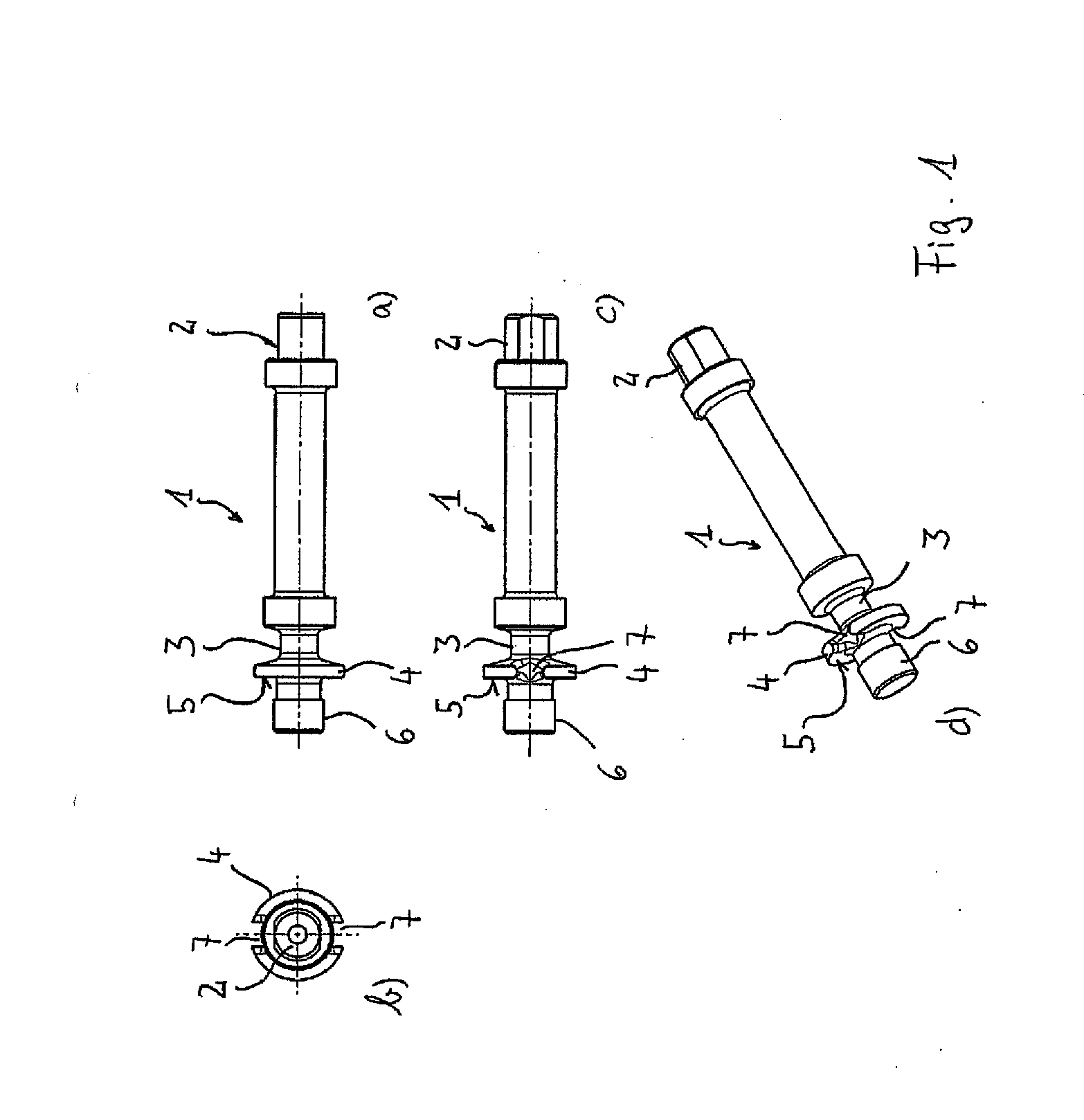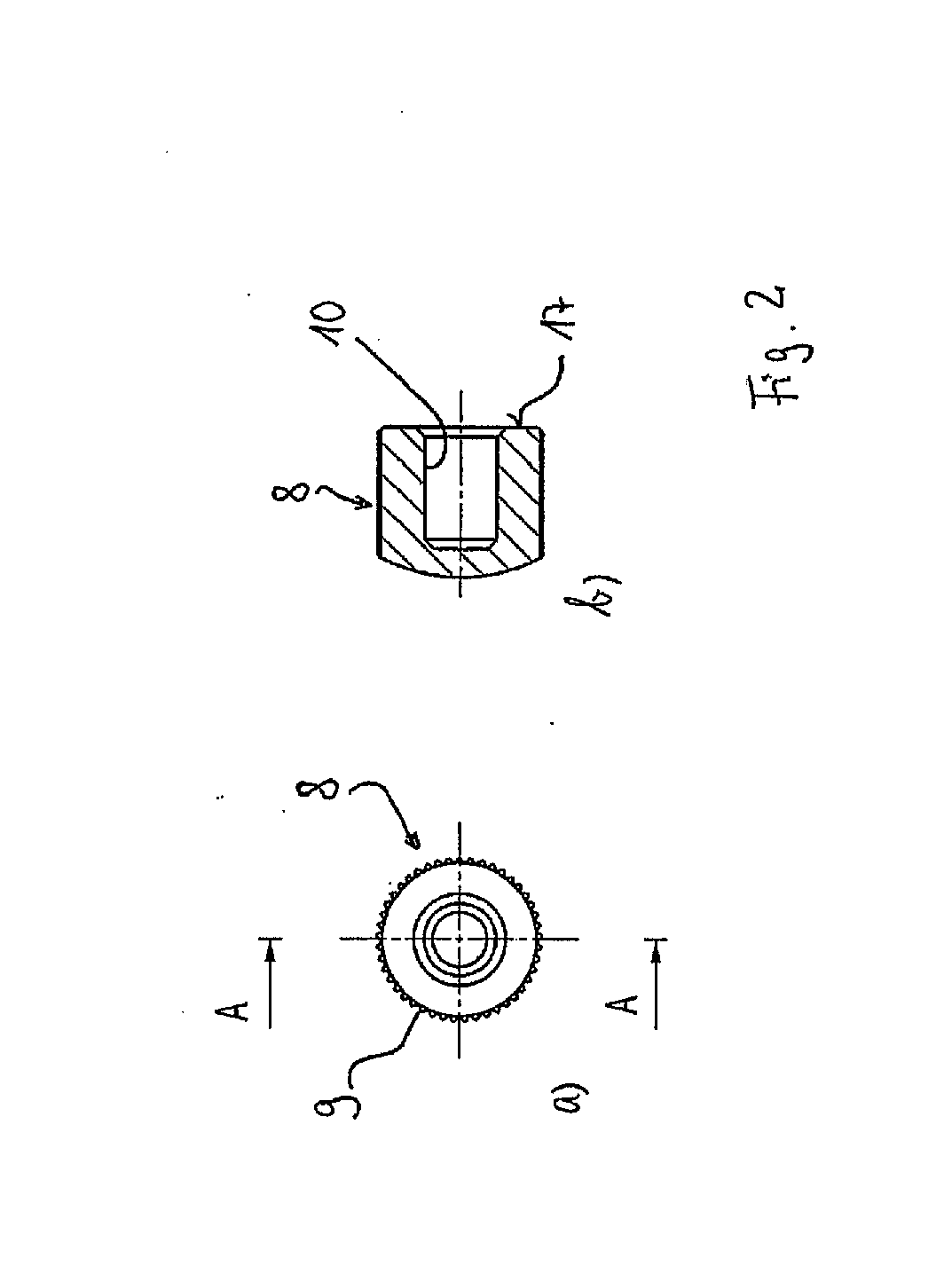Tuning peg for a stringed instrument
a technology for stringed instruments and tuning pegs, which is applied in the direction of stringed musical instruments, instruments, music aids, etc., can solve the problems of comparatively large space required for tuning pegs, complicated attainment of string ends on tuning pegs, and inability to detune instruments, etc., to achieve a high degree of positional precision and stability, no associated risk, and easy fixation
- Summary
- Abstract
- Description
- Claims
- Application Information
AI Technical Summary
Benefits of technology
Problems solved by technology
Method used
Image
Examples
Embodiment Construction
[0021]The figures show an embodiment of a tuning peg according to the invention that is a tuning peg for a guitar and, in particular, an electric guitar. The figures shown are purely schematic and do not represent complete structural design drawings. They serve merely to explain and describe an embodiment in order to further illustrate the invention.
[0022]FIGS. 1a to 1d show four views of a tuning peg according to the invention without showing the clamping element that is a part of the fastening means for fixing the end of a string of a musical instrument. The tuning peg 1 is an elongated part that is, in technical terms, a shaft. On one of its longitudinal ends, it features a connecting section 2 for connecting the same to an adjustment mechanism, for example a manually driven gear for the rotational adjustment of the tuning peg 1.
[0023]Moreover, the tuning peg 1 features a winding section 3 onto which a string of the musical instrument can be wound, or from which this string can b...
PUM
 Login to View More
Login to View More Abstract
Description
Claims
Application Information
 Login to View More
Login to View More - R&D
- Intellectual Property
- Life Sciences
- Materials
- Tech Scout
- Unparalleled Data Quality
- Higher Quality Content
- 60% Fewer Hallucinations
Browse by: Latest US Patents, China's latest patents, Technical Efficacy Thesaurus, Application Domain, Technology Topic, Popular Technical Reports.
© 2025 PatSnap. All rights reserved.Legal|Privacy policy|Modern Slavery Act Transparency Statement|Sitemap|About US| Contact US: help@patsnap.com



